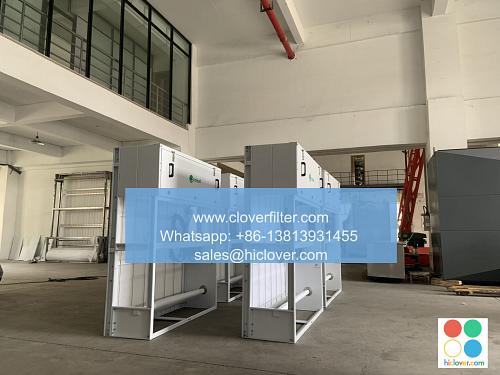The Effectiveness of Air Filters in Reducing Airborne Contaminants: A Documentation Review

Air filters are a crucial component in maintaining indoor air quality and reducing airborne contaminants that can have adverse effects on human health. With the increasing awareness of air pollution and its impact on public health, the use of air filters has become a mandatory requirement in various application areas, including residential buildings, commercial spaces, industrial settings, and healthcare facilities. This article aims to provide a comprehensive review of the effectiveness of air filters in reducing airborne contaminants, highlighting various application areas and key technologies.
Introduction to Air Filters
Air filters are designed to capture particulate matter, gases, and microorganisms from the air, improving indoor air quality and reducing the risk of respiratory diseases. The effectiveness of air filters depends on various factors, including the type of filter media, filter efficiency, and airflow rate. HEPA filters, activated carbon filters, and ionic air purifiers are some of the most common types of air filters used in various application areas.
Evaluation of Air Filter Effectiveness
Numerous studies have been conducted to evaluate the effectiveness of air filters in reducing airborne contaminants. These studies have shown that air filters can significantly reduce the concentration of particulate matter, volatile organic compounds, and microorganisms in the air. For example, a study published in the Journal of Exposure Science and Environmental Epidemiology found that the use of HEPA filters in residential buildings can reduce the concentration of particulate matter by up to 90%. Another study published in the Journal of Air and Waste Management Association found that the use of activated carbon filters in industrial settings can reduce the concentration of volatile organic compounds by up to 95%.
Application Areas of Air Filters
Air filters have a wide range of application areas, including:
* Residential buildings: Air filters are used in home air purifiers and HVAC systems to improve indoor air quality and reduce the risk of respiratory diseases.
* Commercial spaces: Air filters are used in office buildings, shopping malls, and restaurants to improve indoor air quality and reduce the risk of respiratory diseases.
* Industrial settings: Air filters are used in manufacturing facilities, warehouses, and construction sites to reduce the concentration of airborne contaminants and improve worker health and safety.
* Healthcare facilities: Air filters are used in
Key Technologies and Future Directions
The air filter industry is constantly evolving, with new technologies and innovations being developed to improve the effectiveness of air filters. Some of the key technologies include:
* Nanofiber filters: These filters use nanofibers to capture particulate matter and microorganisms from the air.
* UV-C light technology: This technology uses UV-C light to kill microorganisms and reduce the concentration of airborne contaminants.
* IoT-enabled air purifiers: These air purifiers use IoT technology to monitor and control indoor air quality in real-time.
In conclusion, air filters are a crucial component in maintaining indoor air quality and reducing airborne contaminants. The effectiveness of air filters depends on various factors, including the type of filter media, filter efficiency, and airflow rate. With the increasing awareness of air pollution and its impact on public health, the use of air filters has become a mandatory requirement in various application areas. As the air filter industry continues to evolve, we can expect to see new technologies and innovations being developed to improve the effectiveness of air filters and reduce the risk of respiratory diseases. You haven’t provided a question or topic for me to assist you with. Please provide more context or information so I can give you a helpful response. What’s on your mind?

